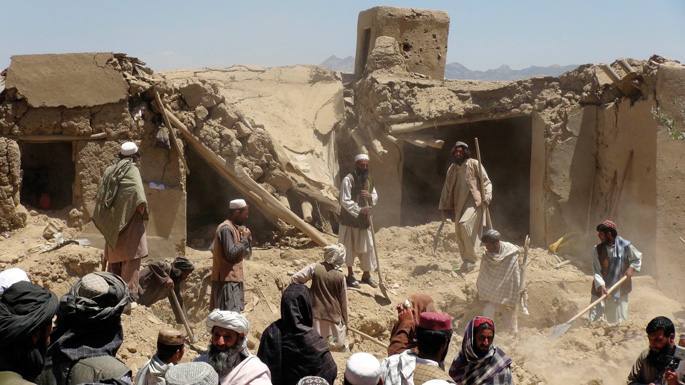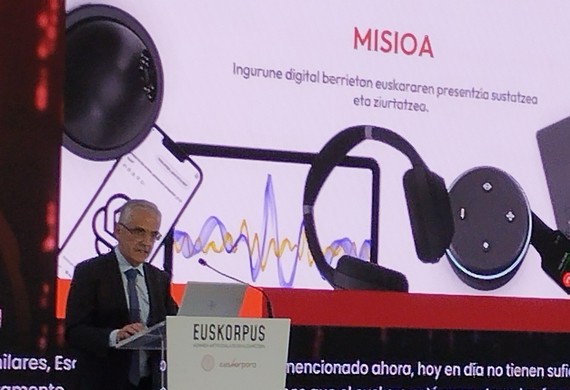If the Obama War was a video game, then it's OK.
- For six years, this U.S. military piloted 6,000 hours of attacking military aircraft -- from afar. “I never thought I was going to kill so many people,” she confesses to the journalist, telling her nightmares after she left the army. The surgery of aircraft without a pilot is not blood-free: the victims among distant people, the victims in the homes.

In London, on 22 May, one of the murderers who had fired a British soldier on the street shouted: “We regret that women have had to see this, but on our land this is what our wives see.” And a little bit later: “We swear we will always fight on behalf of the great Allah. We have done what we have done for Muslims who die every day.”
Western journalists have launched on the technical aspects of non-pilots, better known as drones. On the contrary, very little has been said about the extent to which attacks by airplanes controlled from afar among people in many countries have spread panic. Mainly in the Middle East, from Pakistan to Gaza, not to mention those in Somalia.
Last February, Lindsey Graham, a member of the Senate EE.UU, declared aloud that his army has killed over 4,700 people with missiles from remote aircraft. The need to extend the use of these flies was defended by Graham at the Easley Rotary Club as follows: “Sometimes you beat the innocent and give us disgust, but we are at war and have killed the leading leaders of Al-Qaeda thanks to them.” Most of the attacks have taken place in Pakistan, Yemen and SOMALIA, not forgetting those perpetrated in Afghanistan, Iraq, Gaza and elsewhere in the region. These attacks are the peak moments of the constant and suffocating protection that the populations of these territories feel about themselves.
The war has also caused its first victims in the United States. As in all wars, among the soldiers. When Vietnam's veterans get older, Iraqis get older -- there's injuries under 30 in the U.S. Army. Dreams in Infrared by Nicola Abé de Der Spiegel: The Woes of an American Drone Operator The tragedy of a U.S. drone pilot takes up the story of a military man who has killed human beings thousands of miles away for five years.
“For more than five years,” Abé begins, “Brandon Bryant has been working in a windowless room, the size of a trailer, keeping air conditioning at 17 degrees and without opening doors for safety reasons. Bryant and his colleagues had before them fourteen computer screens and four keyboards. Bryant's button in New Mexico and at the other end of the world, someone died. (...) This is the brain of an unmanned plane. Although the military call it ‘cockpit’, pilots don’t fly in the air, but sit in front of the control instruments.”
24 hours of the enemy
The military remembers that day, his plane aboard in the skies over Afghanistan, about 10,000 kilometres from the control room. I could see on the Ekrane the caset where the goats were kept. Bryant was ordered to shoot, calmly marked the roof of the hut, and the pilot next to him set the Hellfire missile on fire.
In the absence of sixteen seconds for the target to explode. The aircraft sent infrared images to the home monitors, with a delay of between 2 and 5 seconds. It takes seven seconds and everything is fine. In the absence of three seconds, the child appeared in the images, in a small village between Baghlan and Mazari Sharif.
Explosion. There was no trace of the child. In the womb of military unrest. "Have we killed a child? he asked his neighbor. Answer “Yes, I would be a child.” “Was he a child?” they write in the monitor chat. Then someone unknown from some military authority traced the attack in other parts of the world: “No, I was a dog.” Shortly afterwards, Bryant and his colleagues left the wagon and were greeted in a landscape that had nothing to do with the people of the country who had attacked from the screen.
Bryant tells Nicola Abé these things in her mother's living room. At the age of 27 he has left the Army. “In the last four months my dreams are not in infrared,” she said to the journalist as if she had won a great victory. During his six years in the United States Army he has seen many people, men, women and children die. “I never thought I could kill so many people. The truth is, I thought I couldn't kill anyone."
I wanted to be a journalist. But before the end of the first year in college, I already had thousands of dollars worth of debt. He came to the aid of a fellow who was going to join the army and learned that the army had a university and free of charge. Due to the correct conduct of the access tests, she was immediately incorporated into a data collection unit.
The first mission at the age of twenty, worth remembering. It was the sunrise in Iraq. Some soldiers were coming back to the base, their sentinel was Bryant, who was walking in the sky, surrounded by the drone's eyes. Then he saw that eye. Enemy combatants put a wheel on the road floor, burn it, melt the asphalt and put the explosive inside. It looks like an eye seen from the sky.
Bryant and his co-worker informed the head of the team, the head of the team, to the plant. But if the convoy's vehicles came back, the guards couldn't tell ... With his own eyes he saw the explosion that had killed the five soldiers. From then on, he dedicated himself to the task with determination.
These murderous moscardons leave the military bases in the area to control them to those in the United States. Bryant has told how they watched people through the air, observing all day those who worked in the fields, the children who played football ...
At night, care is performed with infrared rays. It's very hot in Afghanistan, people are sleeping under the light roof. “I saw them make love with their women. Two infrared drops become one.”
For whole weeks he spared the Taliban soldiers. “You know them at the end. All of a sudden shoot until they send you from above.” When she came home, she realized how many children had left orphans. “There was no time to feel sentimental.”
Until it overflowed. She couldn't cope with work, she couldn't smell, she couldn't sleep for four hours, she couldn't keep in touch with a girl, get to spit blood. The medical diagnosis indicates that veteran Bryant suffers from post-traumatic stress and that the patient suffers from terminal cancer.
Ortutik itzuli berritan erabaki nuen Twitterretik alde egitea, oraindik Twitter zenean. Auzolan batera joan nintzen, brokoliak eta azaloreak landatzera, eta mindfulness efektua zapuztu zidan algoritmoak, idazle feminista transgorrotatzaile baten txioak jaurtitzearekin... [+]
Iragana ulertzen saiatzen eta etorkizuna bideratzen, oraina joaten zaigu zenbaiti. Nire proiektuetako bat (hasi baina landu ez dudana oraindik) dudan zuhaitz genealogikoa egitea da. Horretan lagunduko didan liburutxo bat ere erosi nuen. Baina, hain da handia lana, liburutxoa... [+]
Sustatun agertutako salaketa, LaLiga futbol erakunde espainiarraren eta Movistar/Telefonicaren arteko tratuek euskarazko zerbitzuak kaltetzen dituztela Interneten (kasu hartan Egunean Behin jokoan irudiak desagertzea zen kontua), hedatu egin da. Tokikom-eko euskarazko tokiko... [+]
Silicon Valley-ko oligarkia AEBetako gobernura iritsi berritan lehertu da adimen artifizialaren (AA) burbuila. Txip aurreratuen erraldoia den Nvidia-k urtarrilaren amaieran izandako %16,8ko balio galera, egun bakar batean inoiz izan den burtsa balio galerarik handiena da... [+]
Geroz eta ekoizpen gehiagok baliatzen dituzte teknologia berriak, izan plano orokor eta jendetsuak figurante bidez egitea aurrezteko, izan efektu bereziak are azkarrago egiteko. Azken urtean, dena den, Euskal Herriko zine-aretoak gehien bete dituztenetako bi pelikulek adimen... [+]
Ikerketa bat egin dute Alemanian, hauteskundeen atarian: kontuak sortu dituzte TikToken, X-n eta Instagramen, eta aztertu egin dute algoritmoak zer nolako edukiak erakusten dituen. Guztietan, algoritmoak eskuinera eta eskuin muturrera jotzen du gehien, TikToken nabarmen.
Euskorpora elkartearen eta Euskorpus proiektuaren abiatzeak hautsak harrotu ditu. Pello Otxandiano EH Bilduko Eusko Legebiltzarreko oposizio buruak Euskorpusena akatsa dela uste du, "ezjakintasuna edo estrategia klientelarra". EH Bilduk galdera sorta egin du... [+]
Diario de Noticias de Álava (DNA) egunkariko langileak sinadura greban daude, eta aspaldi ari dira beren lan baldintza “miserableak” eta horiek kazetaritzaren kalitatean duen eragina salatzen. 2013tik soldatak izoztuta dituzte, eta ordutik erosahalmenaren %30... [+]
There are many ways to gain power; not all are beautiful. There are those who want to divide the power and the responsibility that it entails with it, who seek authority. Others have a lot of respect for him and the fact that each step is so measured makes them unable to make a... [+]
From the Association of Parents of the Instituto Arratia Small Tram we want to encourage reflection on the use of screens in the learning community.
Lately there is a lot of concern about the impact of screens on children and adolescents. This responsibility extends from... [+]
Azken boladan gero eta gehiago entzuten dugu gazte askok etxebizitza erosteko ahalmenik ez dugula. Batzuetan, badirudi ez dagoela beste gairik; egia da gai serioa dela. Niri neuri ere, 31 gertu izan arren, oraindik pixka bat falta zait neurea izango den etxebizitza lortzeko... [+]
“I will overturn, overturn, overturn, it[...]”
Ezekiel 21:27 – King James Version
“Above all algorithms, below all algorithms”
Xabier Landabidea
I’m uncomfortable, uncomfortable with the almost religious attitude our society has taken towards technology, and... [+]






















